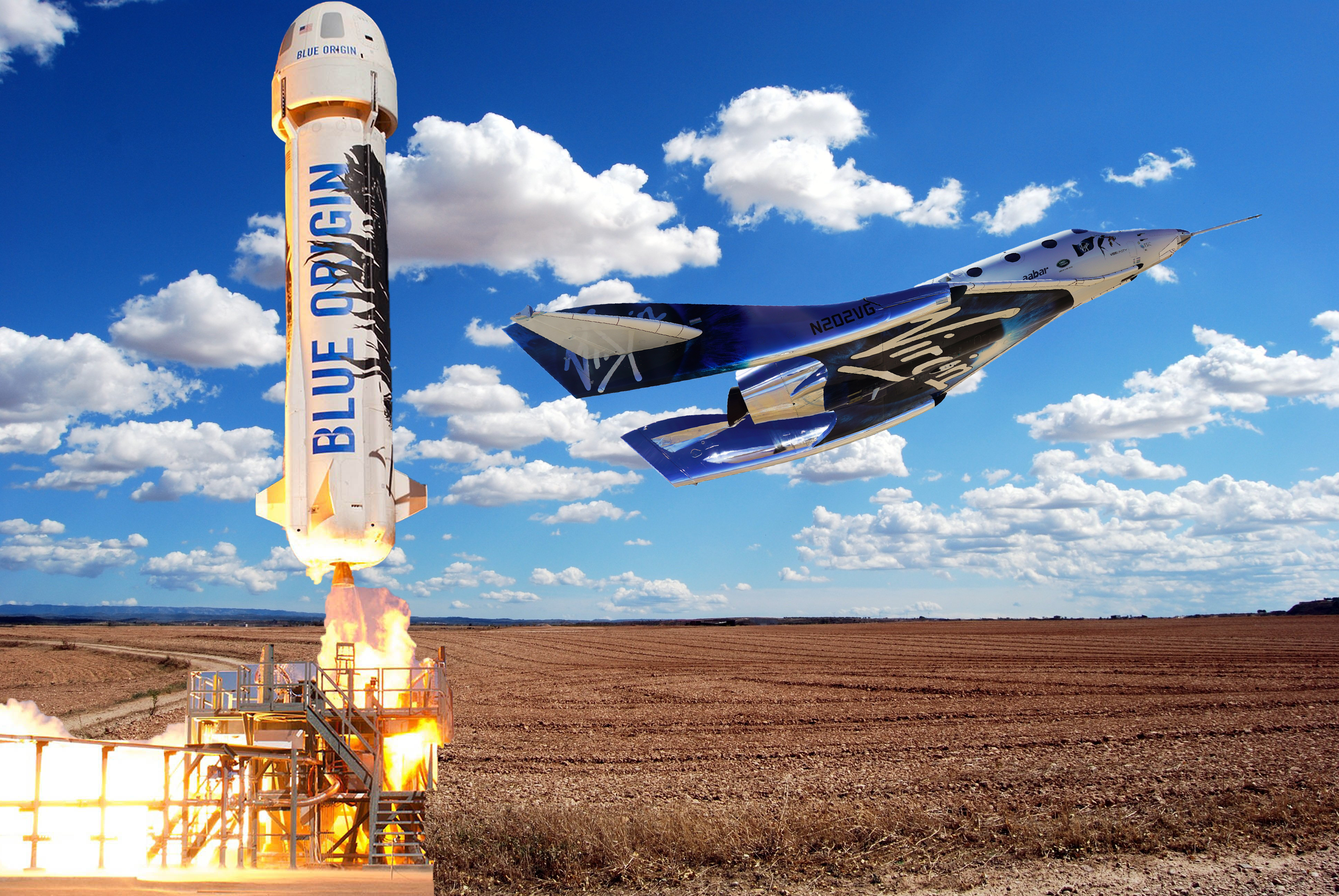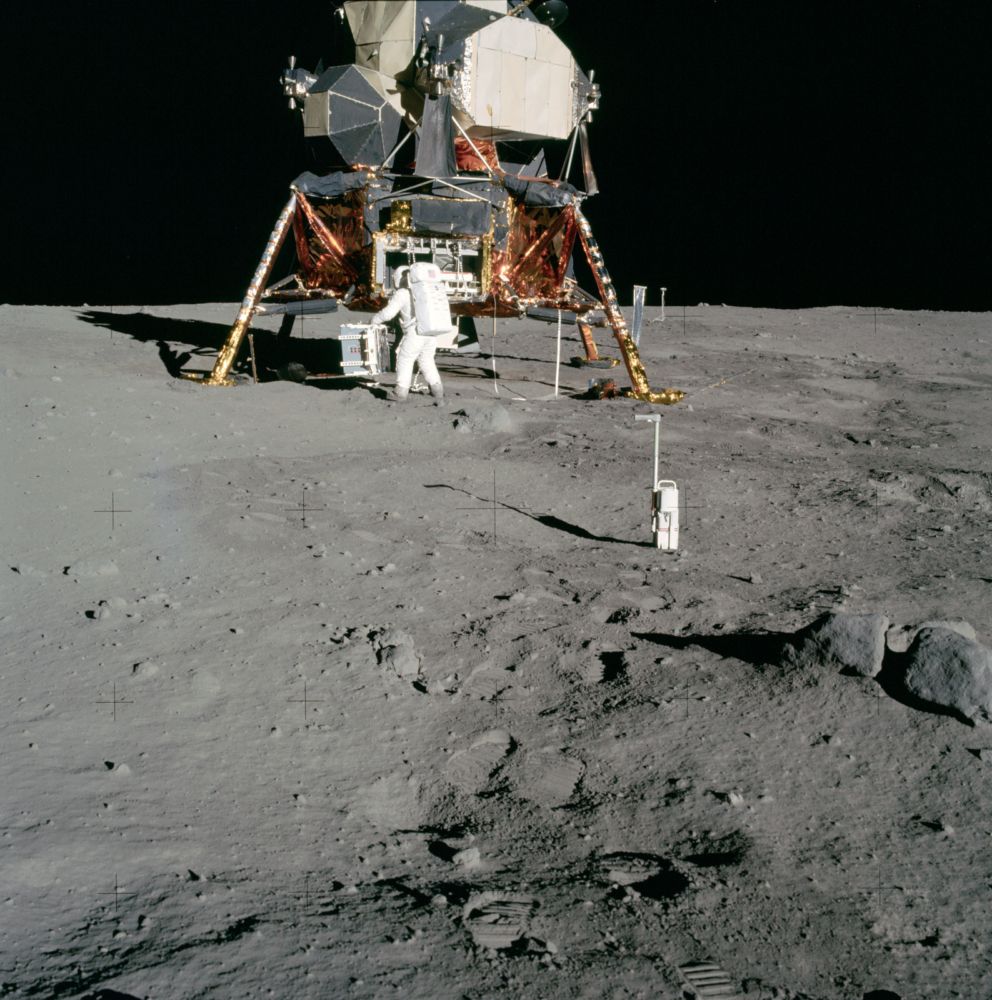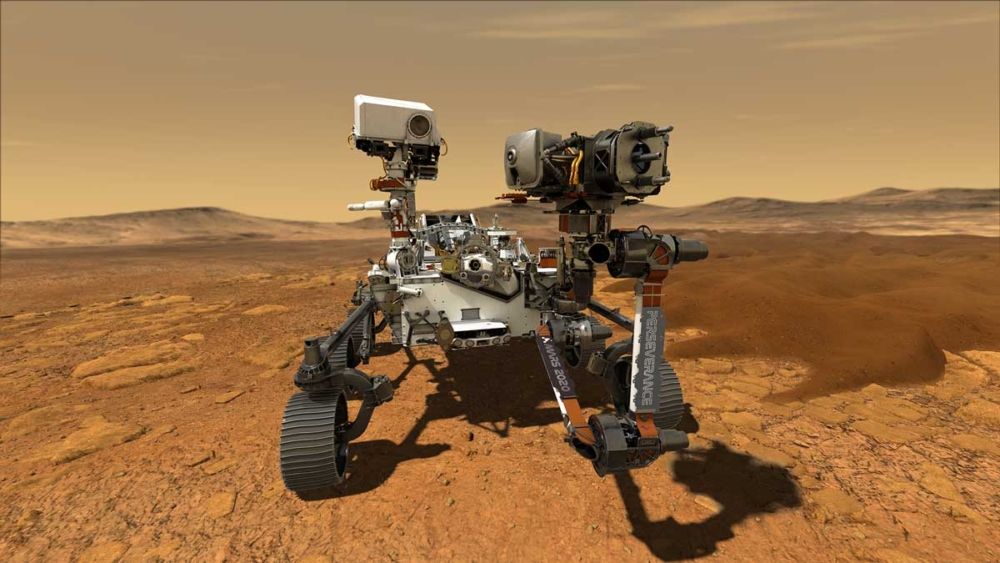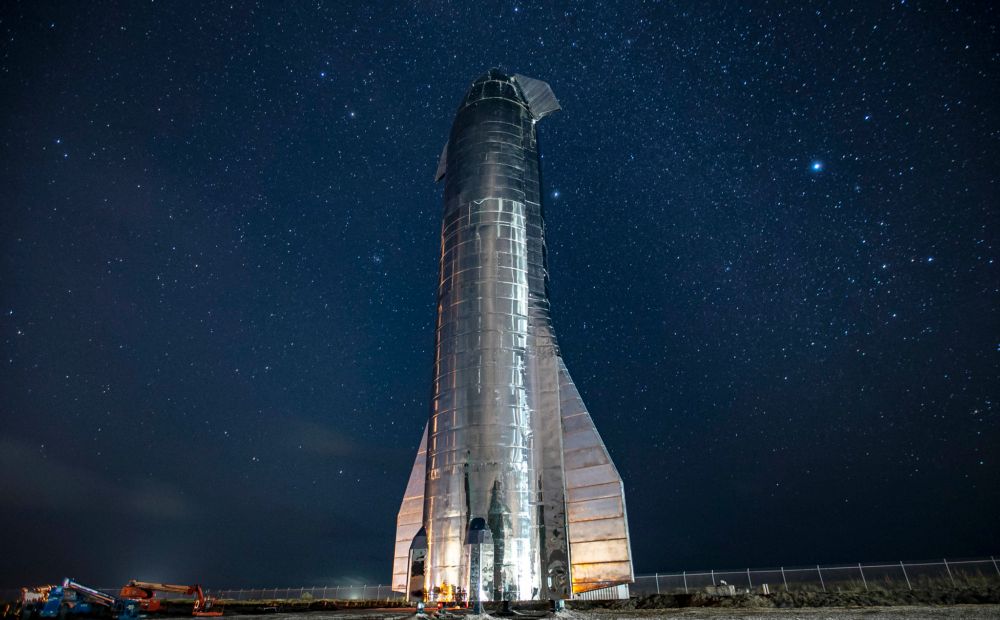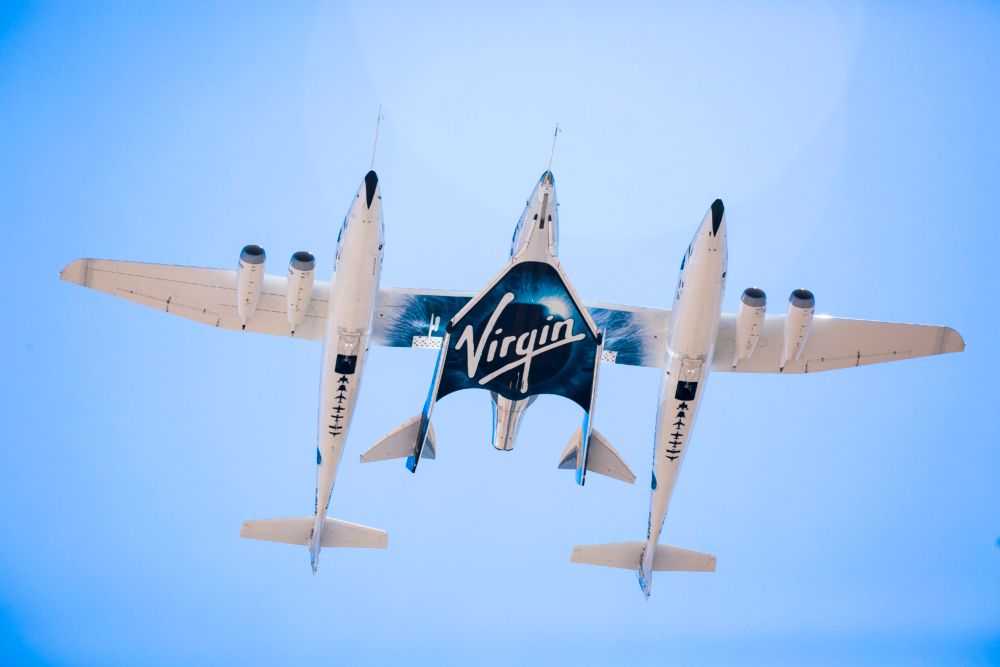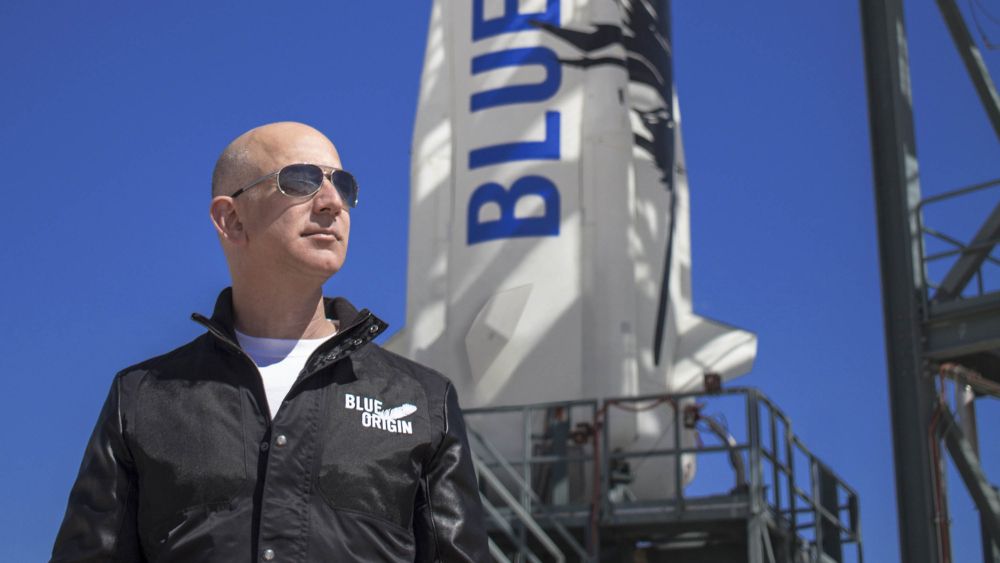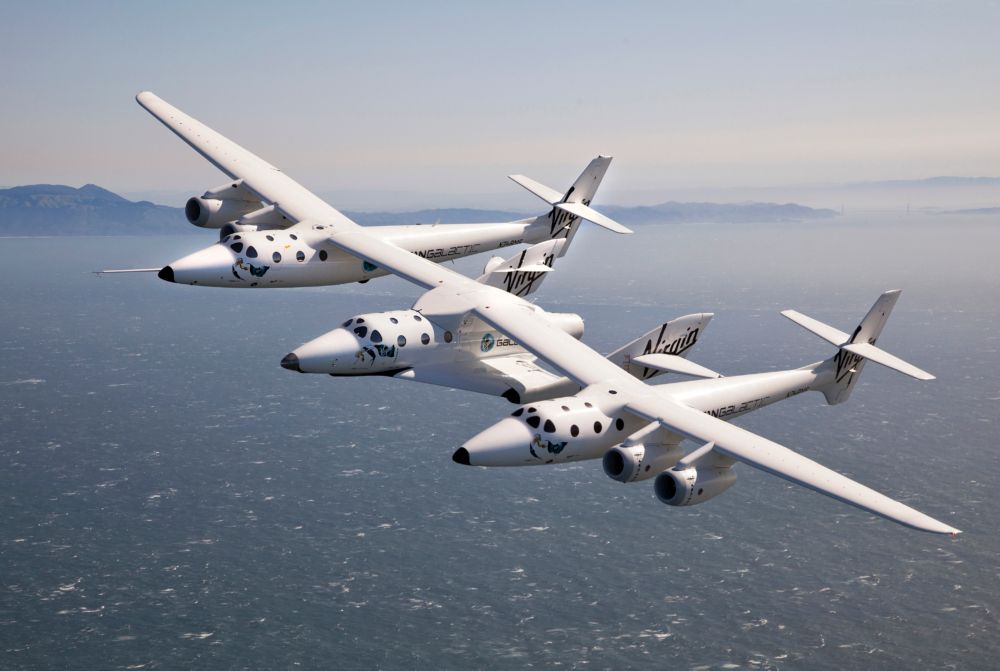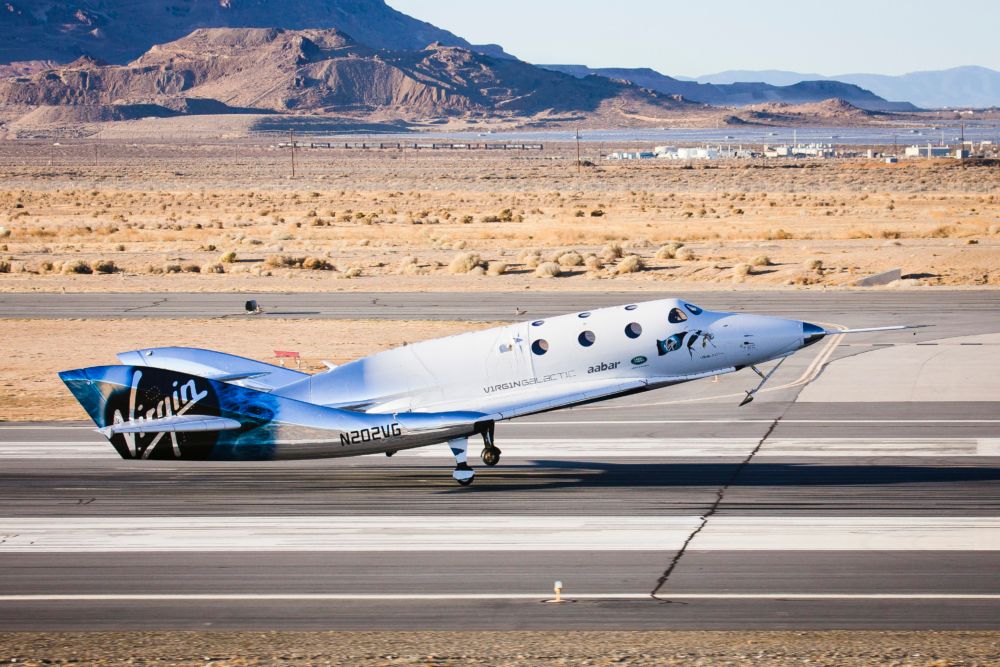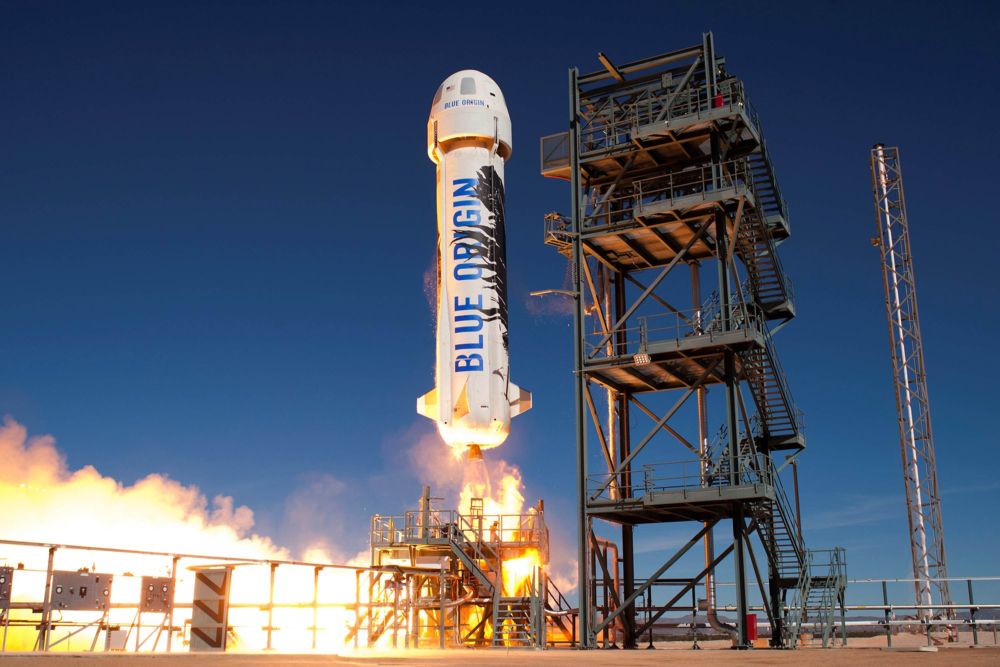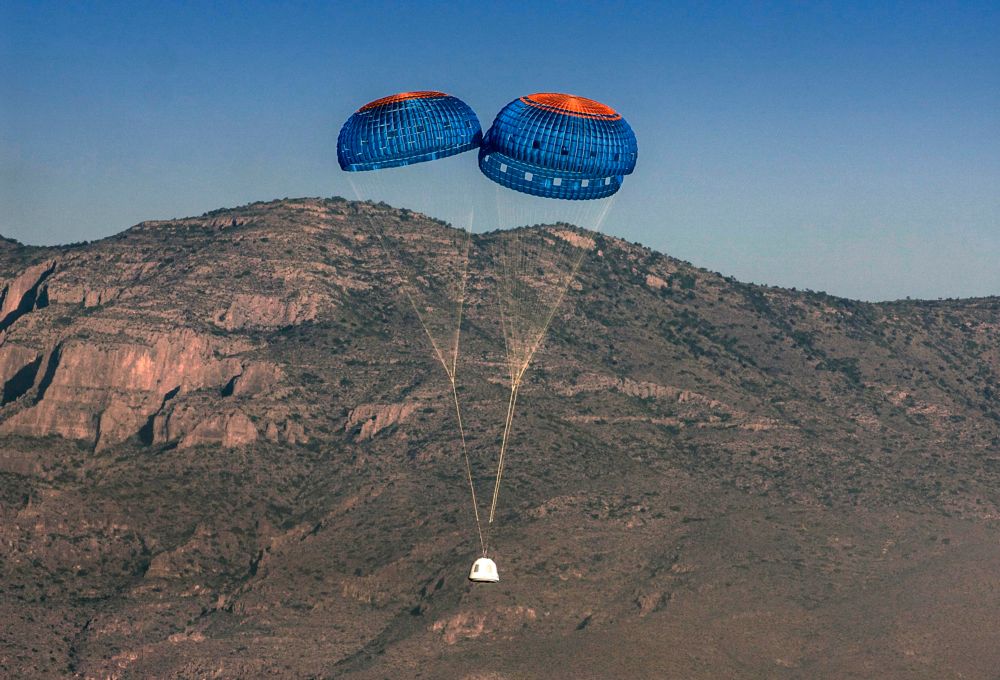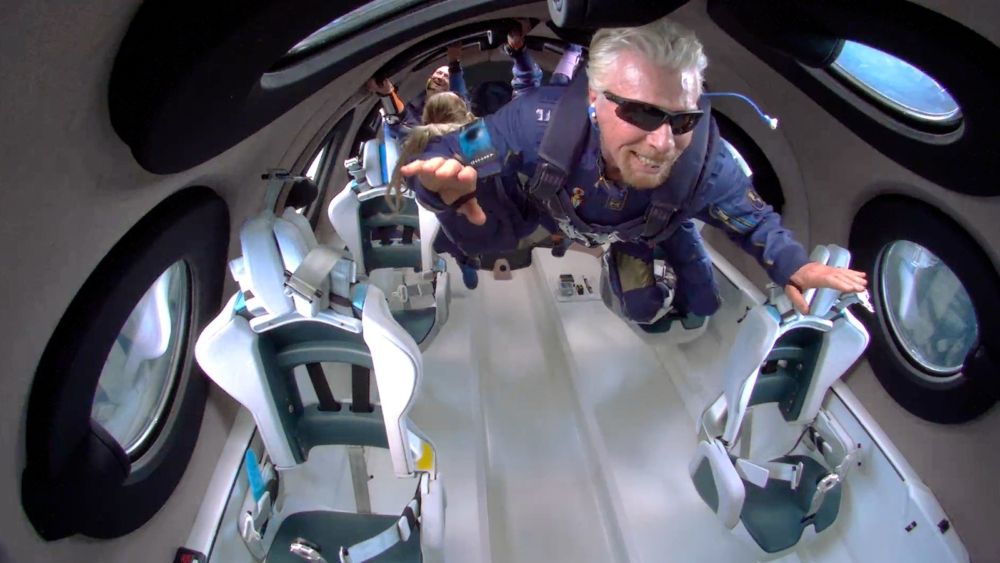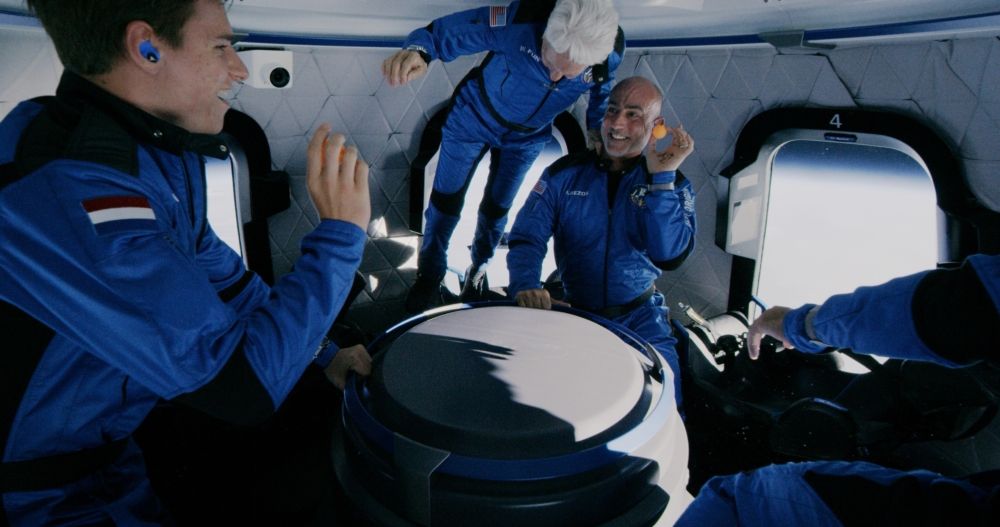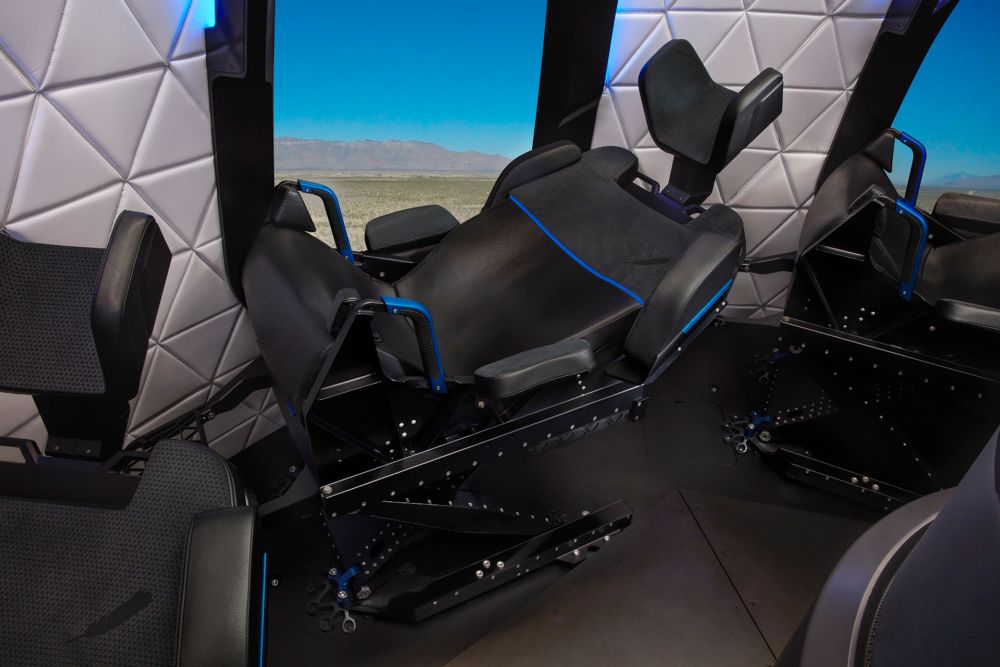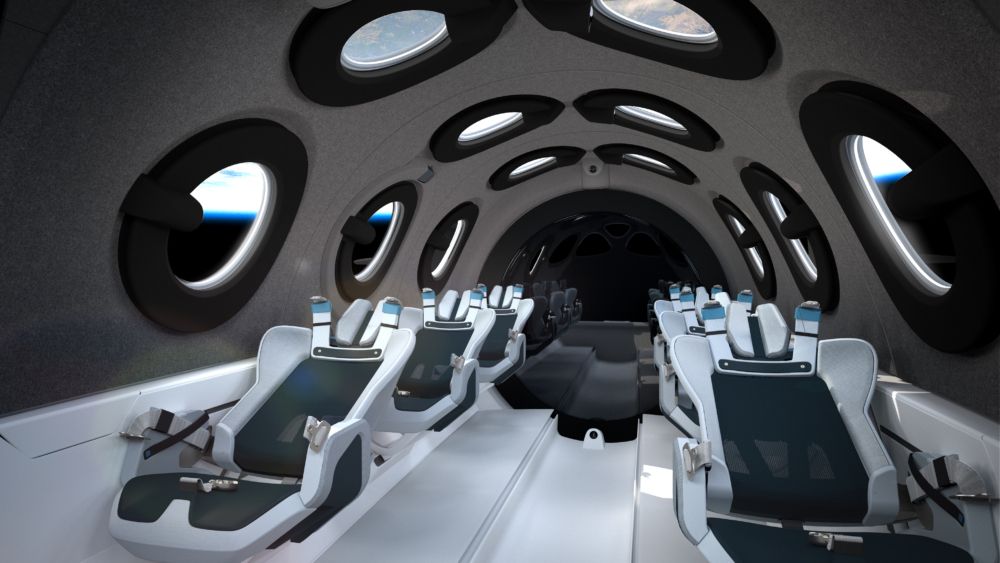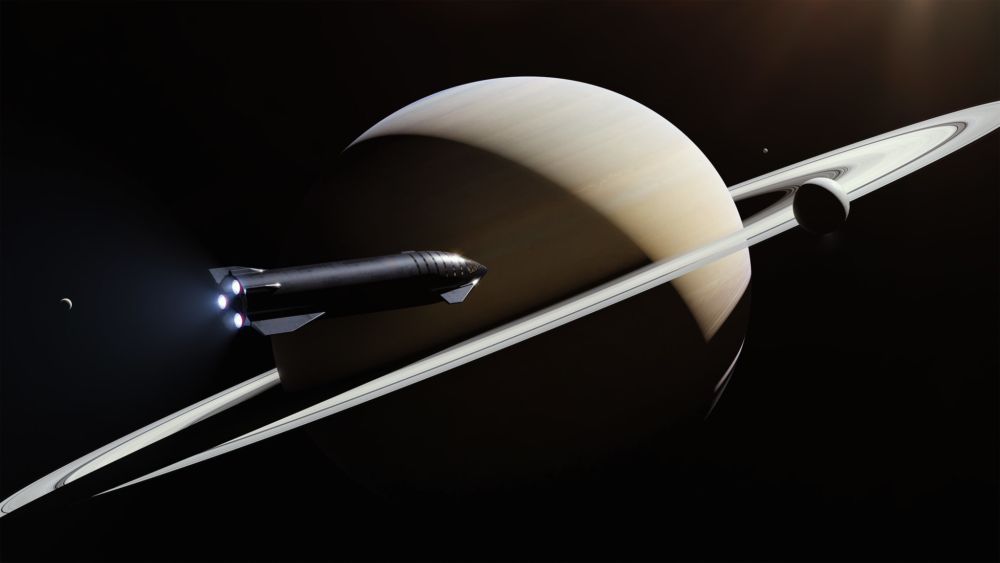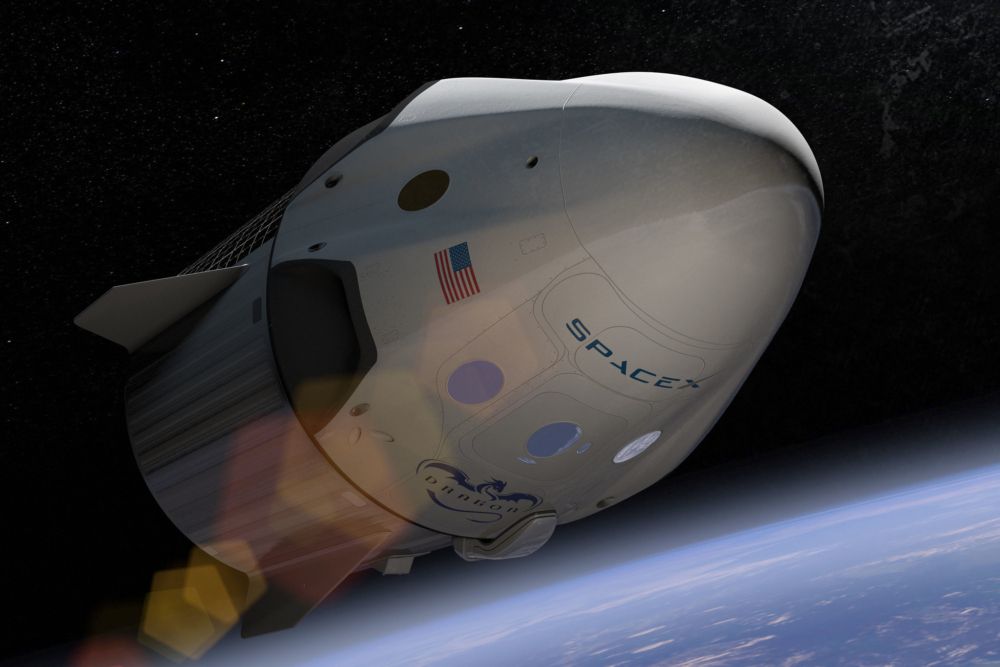In what is being dubbed the ‘billionaire space race,’ global entrepreneurs are going head to head to accelerate the space industry, taking everything from rocket launches to space flights into the hands of the private sector. Of these, two investors are targeting passenger flights – Richard Branson with Virgin Galactic and Jeff Bezos with Blue Origin. Let’s take a look at how they stack up against one another.
The evolution of the space race
The original space race was a game of political might, with two Cold War adversaries, the USSR and the United States, battling it out to be the first to reach milestones in space exploration. With its origins in the nuclear arms race between the two countries, the nations pitted all their technological might to achieve the symbolic victories of the era.
The USSR achieved the first artificial satellite launch in 1957, with Sputnik 1, and subsequently put the first man in space when Yuri Gagarin orbited the Earth in 1961. Other firsts were also achieved by the USSR, including reaching the moon for the first time with the Luna program.
But, of course, it was the USA that won the race to the moon when it landed Apollo 11 in July 1969. Soon after this, relationships relaxed, and in 1972 an agreement to cooperate on the Apollo-Soyuz Test Project heralded an era of cooperation rather than competition in space exploration.
Since then, the impetus to rush space missions has been removed, but it hasn’t stopped humans from exploring the extraterrestrial world. The 1980s brought about the NASA Space Shuttle, which was used until 2011 to propel a variety of payloads into orbit. Satellite launches, interplanetary probes, the Hubble Space Telescope, and even the construction and servicing of the International Space Station (ISS) were all founded in the Space Shuttle program.
Russia, too, has continued to advance its space program, assembling the first space station known as Mir in 1986. As the USSR broke up and modern Russia emerged, funding problems left it in a tight position. The Roscosmos State Corporation for Space Activities, known as Roscosmos, became the voice of Russia’s space missions, collaborating with NASA on the ISS construction. It has launched a number of new programs, from piloted spacecraft to mating geckos in space.
Today, humanity continues to break barriers in a bid to get to know what’s outside our atmosphere better. Voyager 1 has left the solar system and continues to travel away from Earth. It is currently more than 14 billion miles away, traveling at 38,000 miles per hour. Mars continues to be explored vigorously, with the latest rover, Perseverance, capturing never before seen images, sounds and samples from the red planet.
But the space race has now taken a new twist, with the entry of private investors into the field.
The space race enters the private sector
It was only a matter of time before space exploration gained traction from some of the world’s wealthiest people. Taking it into private hands means public funding is no longer a constraint, which could prove to be the tipping point in accelerating humankind’s capabilities in extraterrestrial technology.
The privatization of the space industry has become known as NewSpace, and has triggered what’s been dubbed the ‘billionaire space race.’ Among the key players here are SpaceX eccentric Elon Musk, Amazon founder Jeff Bezos, Russian-Israeli billionaire Yuri Milner and British entrepreneur Richard Branson.
For Musk, the mission is all about getting people off the planet. While SpaceX has largely been focused on low-Earth orbit satellites and reusable rockets, the ultimate goal is the Starship – a human-carrying spaceship capable of taking people to colonize Mars.
Milner backs a project known as Breakthrough Starshot – an engineering mission to develop a proof of concept fleet of interstellar probes. The probes will use light sail technology to make the journey to the Alpha Centauri star system, with a goal to reach the Earth-sized exoplanet located in the ‘Goldilocks’ zone in just 20 – 30 years of flight time.
But two of these billionaires are actually interested in passenger flights. Virgin Atlantic founder Richard Branson wants to take passengers to suborbital space, letting them experience weightlessness and a unique view of Planet Earth. Virgin Galactic is set to start offering tourist flights from 2022, pending more test flights of its technology.
Online shopping mogul Jeff Bezos has a competing offer, with his Blue Origin project aiming to take tourists to the edge of space in a pressurized capsule. Passengers will, similarly, experience some moments of weightlessness and stunning views of our home planet through the large capsule windows.
While the two technologies sound very similar, there are some striking differences in what they have to offer.
Stay informed: Sign up for our daily and weekly aviation news digests.
Blue Origin versus Virgin Galactic
Let’s begin with the most obvious of differences – the appearance of these suborbital spaceships. Even at first glance, it’s clear that the two billionaires have taken quite different approaches to getting off the ground.
|
Blue Origin |
Virgin Galactic |
|
|---|---|---|
|
Propulsion |
Rocket launched |
Lifted by carrier aircraft |
|
Altitude |
327, 360 ft (100 km) |
262,000 feet (80 km) |
|
Capacity |
Six passengers |
Two crew, four passengers |
|
Weightless time |
Three minutes |
Four minutes |
|
Landing |
Falls back to Earth using parachutes |
Glides back to Earth, landing like a plane |
|
Fuel |
Liquid hydrogen |
Polyamide plastic fuel with a nitrous oxide oxidizer |
Virgin Galactic has opted for a ‘spaceplane,’ a very aircraft-like vessel called the SpaceShipTwo spaceflight system. SpaceShipTwo is actually just the small, central part of the complete launch setup, being hoisted to altitude by a larger carrier aircraft called the WhiteKnightTwo.
At 50,000 feet, SpaceShipTwo is released and rockets into suborbital space. It spends a few moments there and then glides back to Earth, landing on a runway like a regular plane.
In contrast, the Blue Origin project uses a rocket-based approach to getting passengers into space. The New Shepard rocket and capsule blast off from a launchpad, with both parts of the vessel reaching suborbital space together.
The capsule then detaches, with the rocket portion taking itself back to its launch site. The capsule spends a few minutes in space before falling back to Earth using three parachutes.
These are two very different methods of leaving the Earth’s surface, but that’s not the only place where the two projects differ. SpaceShipTwo has space for four passengers and requires two crew to fly the spaceplane. Blue Origin is completely autonomous and has space for six passengers and zero crew on each flight. Virgin takes passengers to a top altitude of 262,000 feet. The New Shepard flies to 327,360 feet.
Clearly, there are some stark contrasts in the design and operation of the two passenger space vehicles, but which one is better?
Who’s winning the space race?
Both Richard Branson and Jeff Bezos have successfully flown their space vehicles in recent weeks, so clearly, both are working as they should. However, there is some debate over the notion of the flights actually entering ‘space’ and whether either of them does at all.
There’s no clear definition of where ‘space’ starts. In the US, the boundary of space is recognized as being 80 km (around 262,000 feet) above mean sea level. By that definition, both flights exceed the boundary. However, there’s another measurement known as the Kármán Line, which is considered to be the boundary between Earth’s atmosphere and outer space. This line is defined to be 100 km (330,000 feet) above mean sea level. As such, only Blue Origin flies high enough to reach this boundary.
Some might consider being ‘in space’ to be commensurate with being in zero gravity. Both billionaires have shared images of themselves floating about in zero gravity, but this might not be as clear-cut as it first appears. Both companies promote an experience of ‘weightlessness,’ with Virgin promising four minutes and Blue Origin three.
However, at that altitude, the amount of gravity is not that much less than you’d experience on the ground. At Virgin’s 80km altitude, the gravitational pull is around 97% of its force on Earth. The floating about is achieved is more about the extended free-fall of the vessel, such as can be experienced in parabolic flights.
In essence, both trips are going to be very similar for passengers on an experiential level. Blue Origin has larger windows, which could be a bonus, but both look pretty comfortable inside. Blue Origin has six fully reclining seats, every one a window seat, with added flex to absorb G-forces in the event of a bumpy landing.
Virgin Galactic has equally comfortable reclining seats, with multiple windows above and to the side of each position.
The idea of blasting tourists off into suborbital space has been met with some criticism for the environmental impact of the trips. According to Virgin Galactic, trips result in around 1.2 tonnes of CO2 production, about the same as a business class return trip from New York to London. Blue Origin’s engines, conversely, are powered by liquid hydrogen. This means the emissions are minimal, although there is still a carbon cost to producing and transporting the fuel.
Both flights are sold with ticket prices of $200,000 - $250,000. But if you’re looking to get maximum air time for your investment, Virgin is the better option. Because the dual hulled, four-engine WhiteKnightTwo undertakes a regular flight up to 50,000 feet, Branson’s recent trip took around two and a half hours to complete. In contrast, New Shepherd flights last around 11 minutes.
Should the smart money wait?
Although both Virgin Galactic and Blue Origin are well on the way to making space tourism a reality, a third player is already some way ahead in terms of its technology. While these companies want to take passengers into suborbital space, SpaceX is on the road to far more adventurous space tourism.
SpaceX is planning to take tourists all the way to the moon, which definitely counts as going to space. The company formed an agreement with Axion Space to fly three private citizens aboard a Dragon spacecraft in early 2022 and last month expanded that agreement for a series of four flights in total.
SpaceX has already proven the capabilities of its Crew Dragon capsule, flying three crewed missions with professional astronauts onboard. In partnership with Axiom, it will take private crews much deeper into space and is working hard on its Starship spacecraft to further explore the extraterrestrial world. Rides are slated to cost around $50 million per person, however, so you’ll need to have bottomless pockets if you want to be part of the adventure.
Which space project floats your boat? Would a ride on one of these futuristic spacecraft be appealing to you? Let us know your thoughts in the comments.

